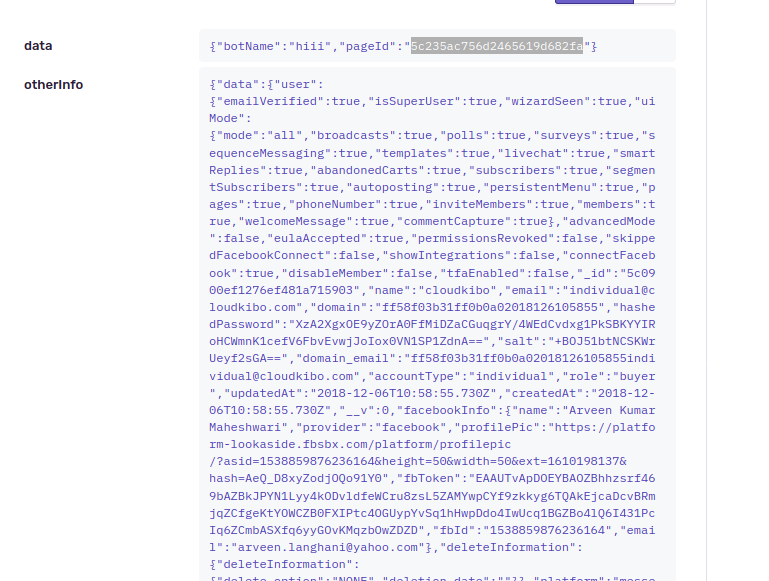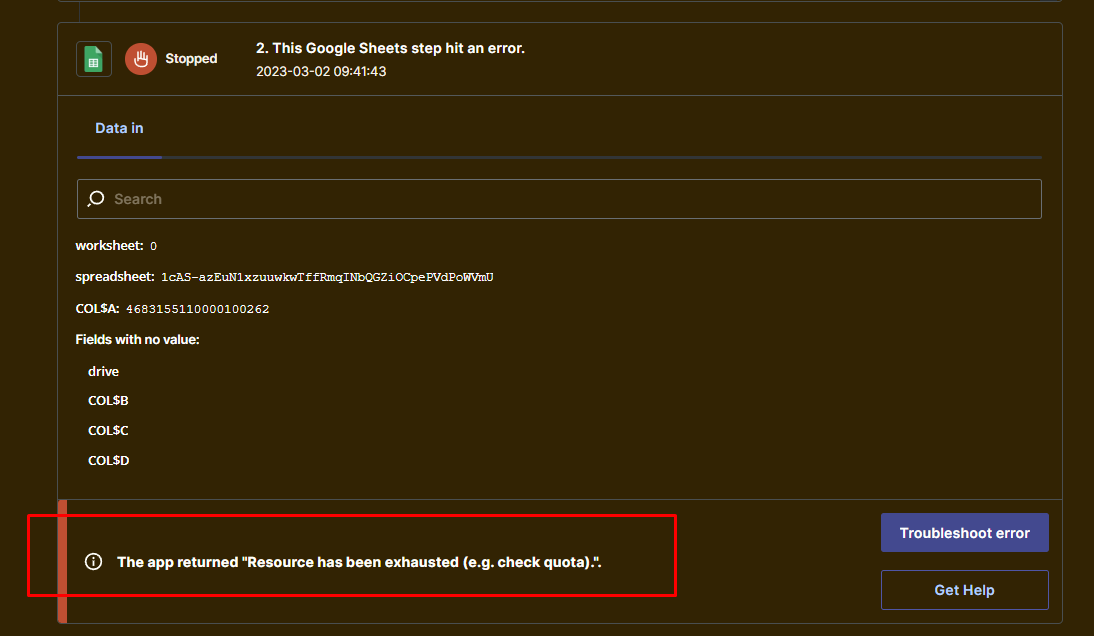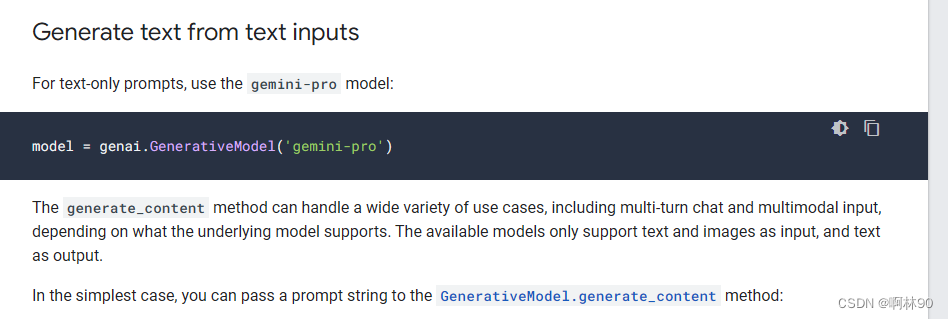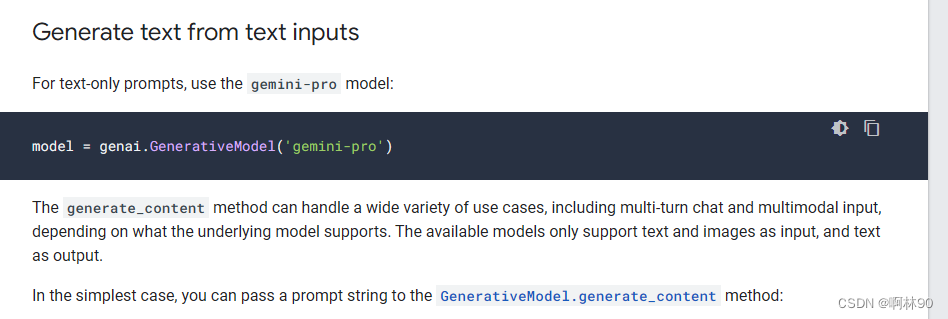Best CRM for electrical contractors is crucial for streamlining operations and boosting profitability. Electrical contracting businesses face unique challenges, including managing complex projects, maintaining clear client communication, and tracking intricate job details. A well-chosen CRM system can address these issues, improving efficiency and ultimately contributing to a more successful business. This guide explores the essential features, leading software options, and implementation strategies for finding the perfect CRM solution for your electrical contracting needs.
We’ll delve into the specific requirements of the electrical contracting industry, highlighting the key features a CRM should offer to overcome common hurdles. From job scheduling and dispatching to seamless integration with accounting software and mobile accessibility for field technicians, we’ll cover all the essential aspects. We’ll then compare leading CRM platforms, analyzing their strengths, weaknesses, pricing models, and ease of use, to help you make an informed decision.
Understanding Electrical Contractor Needs
Electrical contractors face unique challenges in managing their businesses. Unlike many other industries, their work involves a high degree of on-site activity, complex project scheduling, and often, a dispersed workforce. A robust Customer Relationship Management (CRM) system can significantly streamline operations and improve profitability by addressing these specific needs.The unique requirements of a CRM for electrical contractors center around three core areas: efficient job management, seamless client communication, and meticulous project tracking.
Effective job management includes scheduling, dispatching technicians, tracking materials, and managing the entire lifecycle of a job from initial quote to final invoice. Client communication requires a centralized system for handling inquiries, updates, and approvals. Finally, project tracking ensures that projects stay on schedule and within budget, providing valuable insights into overall business performance.
Key Challenges Faced by Electrical Contractors and CRM Solutions
Electrical contractors frequently grapple with three significant challenges: inconsistent project scheduling leading to missed deadlines and unhappy clients; difficulty in tracking project costs and profitability; and inefficient communication resulting in delays and misunderstandings. A well-implemented CRM system directly addresses each of these. By centralizing project information, a CRM allows for better scheduling and resource allocation, minimizing delays. Integrated cost-tracking features provide real-time insights into project profitability, allowing for proactive adjustments.
Finally, improved communication tools facilitate faster responses to client inquiries and smoother project collaboration, leading to increased client satisfaction and improved project outcomes.
CRM System Features and Electrical Contractor Workflow
The following table compares the typical workflow stages of an electrical contractor with the corresponding features of a CRM system, highlighting the benefits and potential issues.
| Workflow Stage | CRM Feature | Benefits | Potential Issues |
|---|---|---|---|
| Lead Generation & Qualification | Lead Capture, Lead Scoring, Contact Management | Efficiently manage incoming leads, prioritize high-potential prospects, and track communication history. | Requires accurate data entry and consistent lead nurturing strategies. Integration with other marketing tools may be necessary. |
| Job Scheduling & Dispatch | Scheduling Calendar, Task Management, Mobile Access | Optimize technician schedules, reduce travel time, and ensure timely job completion. Real-time updates for technicians in the field. | Requires accurate job details and technician availability information. Integration with GPS systems can improve accuracy. |
| Project Management & Tracking | Project Timeline, Task Assignment, Progress Tracking, Expense Tracking | Maintain accurate project timelines, track progress against milestones, monitor costs, and identify potential issues early. | Requires regular updates and accurate data input from all team members. May require training to ensure proper usage. |
| Client Communication & Reporting | Communication Logs, Automated Email/SMS, Reporting Dashboards | Improve communication efficiency, provide timely updates to clients, and generate reports on project performance and profitability. | Requires consistent communication practices and clear reporting procedures. Data privacy and security must be prioritized. |
| Invoicing & Payment Processing | Invoice Generation, Payment Tracking, Financial Reporting | Streamline invoicing process, track payments, and generate financial reports for better business analysis. | Requires accurate cost tracking and integration with accounting software. May need to manage multiple payment gateways. |
Essential CRM Features for Electrical Contractors: Best Crm For Electrical Contractors

Choosing the right CRM can significantly streamline operations and boost profitability for electrical contractors. A well-integrated system improves communication, manages projects effectively, and ultimately leads to increased customer satisfaction and a healthier bottom line. This section details key features that are essential for maximizing the benefits of a CRM in this specific industry.
Job Scheduling and Dispatching Features
Efficient job scheduling and dispatching are critical for electrical contractors. Delays and miscommunication can quickly escalate costs and damage customer relationships. A robust CRM system should offer features that minimize these risks.
- Calendar and Scheduling: A centralized calendar allows for easy visualization of all scheduled jobs, technician availability, and potential conflicts. This prevents double-booking and ensures optimal resource allocation.
- Job Assignment and Routing Optimization: The system should automatically assign jobs to the most appropriate technician based on skills, location, and availability. Advanced systems may even utilize GPS data to optimize routing, minimizing travel time and maximizing efficiency.
- Real-time Job Status Updates: Technicians should be able to update job progress in real-time, providing clients with transparency and allowing dispatchers to proactively address any potential issues. This reduces phone calls and improves communication.
- Automated Reminders and Notifications: Automated reminders for appointments, material orders, and follow-up tasks ensure nothing falls through the cracks. This reduces administrative overhead and improves overall project management.
- Service Level Agreements (SLAs) Management: The CRM should track SLAs, ensuring that jobs are completed within agreed-upon timeframes. This feature aids in maintaining high customer satisfaction and helps identify potential bottlenecks in the workflow.
CRM Integration with Accounting Software
Integrating your CRM with your accounting software creates a seamless workflow and eliminates data entry duplication. This integration significantly reduces administrative burden and minimizes the risk of errors.The benefits include automated invoicing directly from completed jobs recorded in the CRM, streamlined expense tracking linked to specific projects, improved financial reporting with accurate job costing, and enhanced project profitability analysis.
For example, a contractor can easily track the profitability of each job by linking expenses and time spent directly to the project within the CRM, and then automatically generate invoices from that data. This provides real-time financial insights and allows for data-driven decision-making.
Mobile Accessibility for Field Technicians
Mobile accessibility is paramount for field technicians. A mobile-friendly CRM allows technicians to access crucial information anytime, anywhere, leading to improved efficiency and customer satisfaction.Examples of efficiency improvements include: Technicians can access job details, client information, and previous service history directly on their smartphones or tablets, eliminating the need for constant back-and-forth communication with the office. They can also update job status, submit timesheets, and even generate invoices on the go, streamlining the entire process.
Real-time access to customer information enables faster problem-solving and reduces the number of return visits. For instance, a technician can quickly access past service records to understand the history of a problem, leading to faster diagnosis and resolution.
CRM Software Options Comparison

Choosing the right CRM can significantly streamline operations for electrical contractors. This section compares three popular CRM platforms, highlighting their features, pricing, and overall suitability for the industry. We’ll focus on aspects crucial for electrical contractors, such as job management, client communication, and reporting.
Several factors influence the best CRM choice, including budget, team size, and existing software integrations. This comparison aims to provide a clear understanding of the strengths and weaknesses of each platform, allowing you to make an informed decision.
Three Leading CRM Platforms for Electrical Contractors
The following platforms represent a good cross-section of options available, balancing features, cost, and ease of use. Each platform caters to different needs and preferences, so careful consideration of your specific requirements is crucial.
- HubSpot CRM: A popular, freemium option known for its user-friendly interface and robust marketing automation features. While the free version offers basic CRM functionality, paid tiers unlock more advanced capabilities like sales automation and reporting.
- Zoho CRM: A comprehensive CRM offering a wide array of features at competitive prices. It’s known for its customization options and extensive integrations with other Zoho apps. However, its extensive feature set can sometimes feel overwhelming for smaller teams.
- Salesforce Sales Cloud: A highly scalable and customizable CRM solution often favored by larger enterprises. It offers advanced features like sales forecasting and account management but comes with a higher price tag and steeper learning curve compared to the other two options.
Pricing Models of the Three CRMs
Understanding the pricing structure is vital for budgeting purposes. Each CRM offers different pricing tiers with varying features and user limits. Additional costs may arise from integrations, add-on services, or custom development.
- HubSpot CRM: Offers a free plan with limited features, followed by tiered subscription plans based on the number of users and features required. Additional costs might include integrations with other marketing or sales tools.
- Zoho CRM: Provides various subscription plans, categorized by features and user limits. Pricing generally increases with the number of users and features included. Customizations and add-on apps can incur extra costs.
- Salesforce Sales Cloud: Operates primarily on a subscription model with different editions (Essentials, Professional, Enterprise, Unlimited) offering progressively more features. Pricing is per user, per month, and can be significantly higher than the other options, especially for larger teams. Additional costs often arise from customizations and implementation services.
Comparison Table: Ease of Use, Integration, and Customer Support
This table summarizes the key aspects of each CRM, allowing for a quick comparison based on ease of use, integration capabilities, and customer support quality.
| Feature | HubSpot CRM | Zoho CRM | Salesforce Sales Cloud |
|---|---|---|---|
| Ease of Use | Very User-Friendly | Moderate | Steeper Learning Curve |
| Integration Capabilities | Good; Integrates well with other HubSpot tools and many third-party apps | Excellent; Integrates seamlessly with other Zoho apps and many third-party options | Excellent; Highly customizable and integrates with a vast range of applications, but often requires custom development |
| Customer Support | Good documentation and community support; paid plans offer dedicated support | Good documentation and support; response times can vary | Comprehensive support options available, but often at an additional cost |
Implementation and Training Considerations

Successfully implementing a new CRM system requires careful planning and execution. A phased approach, coupled with comprehensive employee training, is crucial for maximizing adoption and realizing the full benefits of the system. Ignoring these aspects can lead to wasted investment and frustrated employees.Implementing a CRM system within an electrical contracting business isn’t a simple ‘switch-on’ process; it’s a strategic initiative that needs careful management.
A well-structured implementation plan minimizes disruption to daily operations and ensures a smooth transition.
Step-by-Step CRM Implementation Plan
A phased rollout minimizes disruption and allows for iterative improvements. Each phase builds upon the previous one, allowing for adjustments based on initial feedback.
- Needs Assessment and System Selection: Thoroughly analyze your business’s current processes and identify specific areas where a CRM can improve efficiency. This involves defining key performance indicators (KPIs) to measure success. Based on this analysis, select the CRM system that best fits your needs and budget. Consider factors such as scalability, integration capabilities, and user-friendliness.
- Data Migration and Cleansing: Transferring existing customer and project data into the new CRM is a critical step. This requires careful data cleansing to ensure accuracy and consistency. Inaccurate data will lead to unreliable reports and poor decision-making. Data migration tools can help automate this process.
- System Configuration and Customization: Configure the CRM system to align with your business processes. This might involve customizing fields, workflows, and reports. Consider using pre-built templates to accelerate the process but ensure they accurately reflect your business needs.
- Pilot Program and User Feedback: Implement the CRM system within a small group of users initially. This allows for testing and refining the system before a full rollout. Gather feedback from these users to identify any issues or areas for improvement.
- Full System Rollout and Ongoing Support: Once the pilot program is successful, gradually roll out the CRM system to the rest of the company. Provide ongoing support and training to ensure users are comfortable with the system and can utilize its features effectively. Regular system updates and maintenance are essential.
Best Practices for Employee Training
Effective training is paramount to ensure user adoption and maximize the return on investment. Training should be tailored to different roles and skill levels.
- Needs-Based Training: Tailor training materials to the specific needs of different employee roles. Office staff will have different requirements compared to field technicians.
- Hands-on Training: Provide practical, hands-on training using real-life scenarios. This approach makes the learning experience more engaging and relevant.
- Multiple Training Methods: Offer a variety of training methods, including online modules, workshops, and one-on-one coaching. This caters to different learning styles.
- Ongoing Support and Resources: Provide ongoing support through FAQs, help desk access, and regular refresher training sessions. Make training materials readily available.
- Gamification and Incentives: Consider incorporating gamification elements into the training program to increase engagement. Incentivize early adoption and proficient use of the CRM system.
Common Implementation Challenges and Solutions
Several common challenges can hinder a successful CRM implementation. Proactive planning and effective strategies can mitigate these issues.
- Resistance to Change: Employees may be resistant to adopting a new system. Address this by clearly communicating the benefits of the CRM, involving employees in the implementation process, and providing adequate training and support.
- Data Quality Issues: Inaccurate or incomplete data can render the CRM ineffective. Implement data cleansing procedures and establish clear data entry guidelines.
- Integration Challenges: Integrating the CRM with existing systems can be complex. Choose a CRM with robust integration capabilities and work with experienced IT professionals.
- Lack of User Adoption: Insufficient training or lack of ongoing support can lead to low user adoption. Invest in comprehensive training programs and provide ongoing support to address user questions and concerns.
- Inadequate Planning: Poor planning can lead to delays, cost overruns, and ultimately, failure. Develop a detailed implementation plan with clear timelines and responsibilities.
Measuring CRM Success

Implementing a CRM system is only half the battle; understanding its effectiveness is crucial for maximizing return on investment. Regularly measuring key performance indicators (KPIs) allows electrical contractors to identify areas of strength and weakness, optimize processes, and ultimately boost profitability and customer satisfaction. This involves a proactive approach to data analysis and a willingness to adapt strategies based on the insights gained.
Key Performance Indicators (KPIs) for Electrical Contractors, Best crm for electrical contractors
Tracking the right KPIs provides a clear picture of CRM performance. For electrical contractors, focusing on metrics directly tied to revenue generation and customer relationships yields the most valuable insights. Ignoring these critical indicators can lead to missed opportunities and inefficient resource allocation.
- Customer Acquisition Cost (CAC): This metric measures the total cost of acquiring a new customer. It’s calculated by dividing the total marketing and sales expenses by the number of new customers acquired within a specific period. Tracking CAC helps identify the most effective marketing channels and optimize spending to attract profitable clients. For example, if a contractor spends $5,000 on marketing and acquires 10 new customers, the CAC is $500 per customer.
- Customer Lifetime Value (CLTV): CLTV predicts the total revenue a customer will generate throughout their relationship with the company. It considers factors like average contract value, contract duration, and customer retention rate. A high CLTV indicates strong customer loyalty and profitable relationships. For instance, if a customer consistently spends $10,000 annually over a five-year period, their CLTV is $50,000.
- Job Completion Rate: This KPI measures the percentage of jobs completed on time and as scheduled. Tracking this metric highlights potential bottlenecks in the workflow and helps identify areas for improvement in project management and resource allocation. A high completion rate demonstrates efficient project execution and customer satisfaction. For example, completing 95 out of 100 jobs on schedule results in a 95% job completion rate.
Using CRM Data to Improve Customer Service and Increase Profitability
CRM data offers invaluable insights into customer behavior and preferences. Analyzing this information allows electrical contractors to personalize their services, improve communication, and ultimately boost profitability.By segmenting customers based on factors like past projects, service needs, and spending habits, contractors can tailor their marketing efforts and provide more relevant offers. For example, a contractor could identify customers who frequently require maintenance services and offer them a bundled maintenance package at a discounted rate.
This targeted approach increases customer loyalty and generates additional revenue. Furthermore, analyzing customer feedback and support interactions helps identify areas for improvement in service delivery. Addressing these issues promptly enhances customer satisfaction and reduces the likelihood of losing clients. Efficient project management, enabled by accurate job tracking within the CRM, minimizes delays and keeps customers informed, thus strengthening relationships.
Regularly Reviewing and Adjusting the CRM Strategy
A successful CRM implementation requires ongoing monitoring and adjustment. Regularly reviewing performance data against established KPIs helps identify areas for improvement and ensures the CRM remains aligned with business objectives.This involves setting realistic goals for each KPI, tracking progress regularly (e.g., monthly or quarterly), and analyzing any deviations from the targets. For instance, if the job completion rate falls below the target, a review of scheduling processes, resource allocation, and potential training needs may be necessary.
Similarly, a decline in CLTV might necessitate a reassessment of customer retention strategies. Based on this analysis, the CRM strategy can be adjusted. This might include refining sales processes, improving customer communication, or investing in new marketing channels. This iterative process of review, analysis, and adjustment is crucial for maximizing the value of the CRM system and achieving long-term success.
Advanced CRM Features and Integrations
Leveraging advanced features and strategic integrations significantly enhances the capabilities of a CRM system for electrical contractors, moving beyond basic contact management to provide a holistic view of their business operations and facilitating data-driven decision-making. This section will explore several key integrations and analytical tools that can optimize efficiency and profitability.
CRM Integration with Project Management Software
Integrating a CRM with project management software offers significant benefits by streamlining workflows and improving collaboration. By connecting the two systems, crucial project-related information—such as client details, project scope, timelines, and budgets—becomes readily accessible within a unified platform. This eliminates the need for manual data entry and reduces the risk of inconsistencies. For example, a contractor using a CRM like HubSpot integrated with a project management tool like Asana can automatically update project status within the CRM as tasks are completed in Asana.
This provides real-time visibility into project progress, enabling better resource allocation and proactive issue management. Another example is the integration of a CRM with a scheduling software. A change in the scheduling of a job will automatically update the CRM with the new information and any related changes that need to be made to the customer’s account.
Predictive Analytics and Resource Allocation
CRM analytics offers the potential to forecast future project needs and optimize resource allocation. By analyzing historical data on project types, durations, resource utilization, and client behavior, contractors can identify trends and patterns. This predictive capability allows for more accurate estimations of future workloads, enabling proactive hiring, equipment procurement, and scheduling decisions. For instance, if a CRM analysis reveals a consistent surge in demand for commercial projects during specific months, the contractor can anticipate this need and proactively recruit additional electricians or secure necessary equipment well in advance.
This prevents last-minute scrambling and ensures that projects are completed on time and within budget. Furthermore, analyzing client interaction data within the CRM can help predict potential project delays or conflicts, allowing for proactive mitigation strategies.
Proposal Generation and Contract Management
CRM systems can significantly streamline the proposal generation and contract management processes. Many CRMs offer built-in proposal templates and document management features. Contractors can create professional, customized proposals quickly by pulling relevant client information and project details directly from the CRM. This reduces administrative overhead and ensures consistency in proposal formatting. Further, integrated contract management capabilities allow for easy tracking of contract status, deadlines, and payments.
Automated reminders can be set for contract renewals or upcoming milestones, minimizing the risk of missed deadlines and potential revenue loss. The ability to link contracts directly to the associated projects within the CRM provides a complete and easily accessible audit trail, simplifying compliance and reporting requirements.
Epilogue
Selecting the best CRM for your electrical contracting business is a significant step towards improved efficiency and profitability. By carefully considering the unique needs of your company, comparing various software options, and implementing a well-structured training plan, you can harness the power of a CRM to streamline your operations, enhance client relationships, and drive growth. Remember that regular monitoring of key performance indicators and adapting your CRM strategy based on data-driven insights are essential for long-term success.
Investing time and resources in the right CRM system will ultimately yield significant returns in terms of operational efficiency and overall business success.
Common Queries
What are the common integration challenges when implementing a CRM for electrical contractors?
Common challenges include data migration issues, incompatibility with existing software, and resistance from employees unfamiliar with new systems. Addressing these requires careful planning, robust data migration processes, and comprehensive employee training.
How can a CRM improve customer service for electrical contractors?
A CRM centralizes customer information, allowing for personalized communication, efficient follow-ups, and proactive service. This leads to improved customer satisfaction and loyalty.
What is the average cost of a CRM for a small electrical contracting business?
Costs vary greatly depending on the features, number of users, and vendor. Small businesses can often find affordable options starting from a few hundred dollars per month.
How long does it typically take to implement a new CRM system?
Implementation time varies, but a realistic timeframe for a small business is between a few weeks and a couple of months, depending on the complexity of the system and the size of the business.

